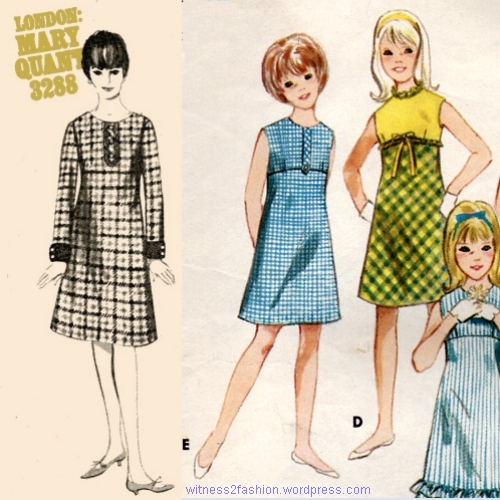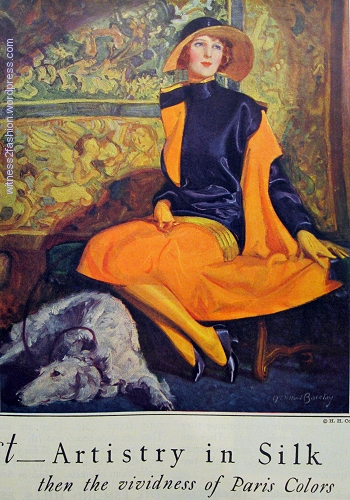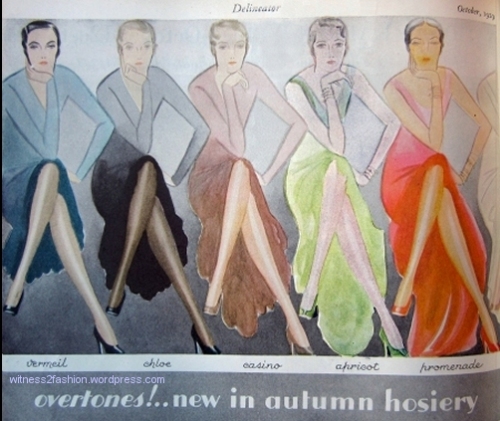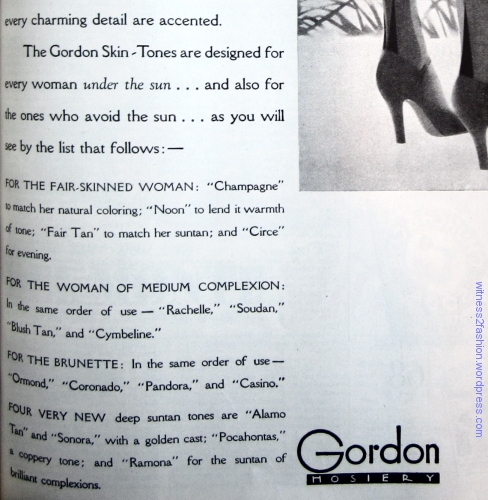I swore off buying vintage patterns, but a trip to the recycling center — which has drawers full — proved too tempting. I bought four. There were two McCall’s patterns for girls from the early 1960’s which caught my eye because of the charming illustration style. . .

Early sixties’ dresses for girls. McCall’s patterns #5365 (1960) and #6384 (1962) These are dress-up dresses, perhaps for Easter or a wedding.
. . . and the way these girls’ dresses echoed the adult fashions of the late fifties and early sixties.

Butterick Fashion News June 1956. Dress #7786. The cummerbund waist was very popular into the early 1960s.
They all have tightly fitted bodices, and the sash on the girl’s polka-dotted dress mimics the high, fitted waist on the women’s styles above and at far left.
Like many store-bought adult dresses with full skirts, the girls’ dresses had stiff, built-in petticoats attached at the waist.
When I was a little girl in the 1950’s, I wanted to be a grown-up. I didn’t enjoy being a child in a world of adults; like Lewis Carroll’s Alice, I was “too big” for some things and “too little” for others.
I was “too big” to cry, but “too little” to stay up when my parents had a party. I could hear the grown-ups laughing and talking in the next room, and, since I hardly knew any other children, those adults were my friends. I wanted to be with them. Being told to go to sleep while it was still light out seemed especially unfair. In the 1970s, I was shocked when one of my students — a boy of 14 — said he didn’t want to be an adult. He wanted the irresponsibility of childhood to last forever, like Peter Pan.
Different generations! (Or, perhaps, different childhoods….)
I bought four vintage patterns for girls, because the change in attitude between the early sixties and the late sixties was striking to me.
In the fifties and early sixties, it was assumed that teenaged girls aspired to become sophisticated women.
But, in the mid to late sixties, women in their twenties dressed like little girls.
Short, body-skimming dresses, exposed legs (often covered in white tights), and low-heeled shoes were all traditionally associated with childhood. So were big eyes, so we wore tons of eye makeup, false eyelashes, and very pale lipstick “to make our eyes look bigger,” moving focus away from the red lips of the fifties sophisticates. [The models in those photos are Jean Shrimpton (an iconic mid-to-late 1960’s model) and Suzy Parker (an iconic 1950’s – early 60’s model.)]
I’m especially struck by how similar these styles, for girls’ sizes 7 to 14, are to the dresses my teenaged friends and I were wearing in the mid sixties.
Although illustrated here on pre-teens, Butterick #3908 was made in girls’ sizes 7 to 14.
Mixing dots and stripes, solids and patterns, and even large and small-scale plaids on clothing was inspired by the Op Art movement.
This Butterick dress (No. 3398) (click to see it) from 1965 has the high waist and color blocking of the yellow and white girl’s dress above.
This dress for teens (Butterick 3695 from 1965) shows a high waist and the playful combination of solids and stripes associated with the “Mod look” of the dress on the right, above. Click here for a Mary Quant example from www.n2journal.com. (Read more about Mary Quant by clicking here.)
I wore dresses like these to work as a teacher and in a bank in the late sixties — sometimes with opaque tights — and I was a very conservative dresser in my early twenties.

Butterick 4519, Vogue 7095 (both 1967) and Simplicity 8365, 1969. Note the Mary Jane shoes and low heels.
The shoes that went with these sixties dresses and mini-skirts were low heeled. The “spike” heeled “stiletto shoes” of the late fifties and early sixties went with longer skirts, and were still worn by older women. I wore a pair of 3 inch spike heels heels to a dance in 1962, but not later in the decade. As I remember the late sixties, very high heels were never worn with a very short skirt by “respectable” young women. (As if their lives were not already painful enough, the women who stood on street corners for a living usually did it in miniskirts and excruciatingly uncomfortable shoes.)





































